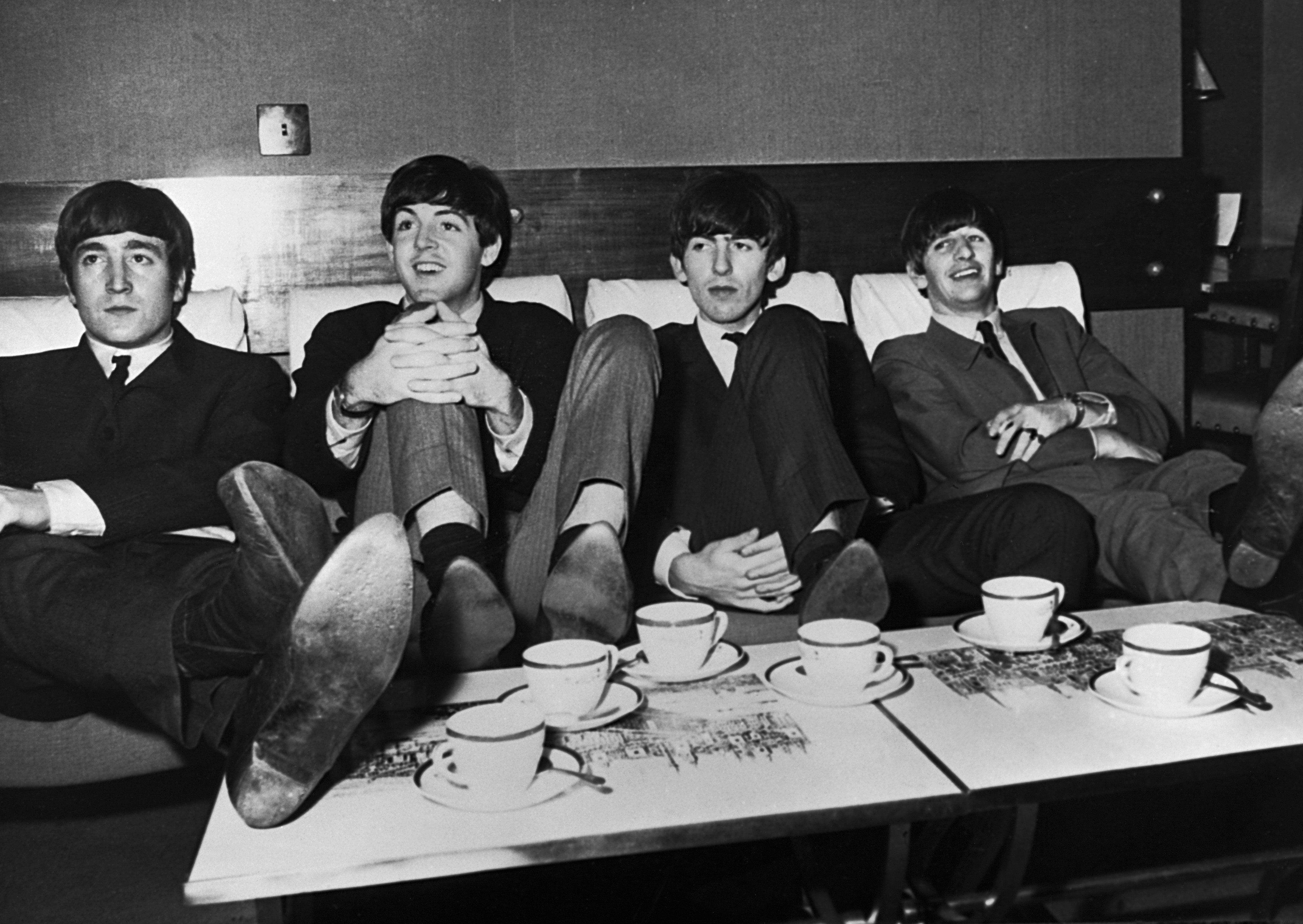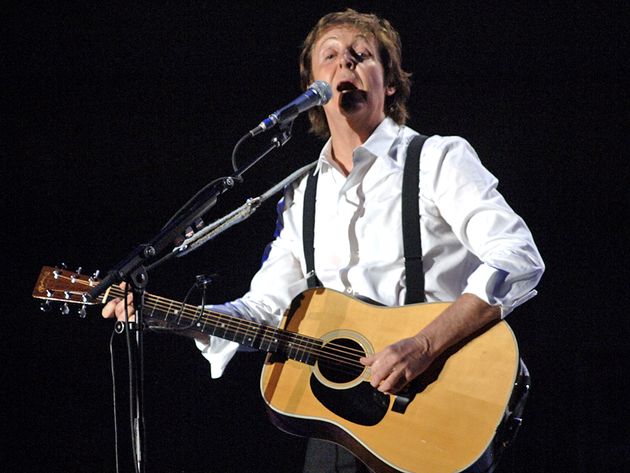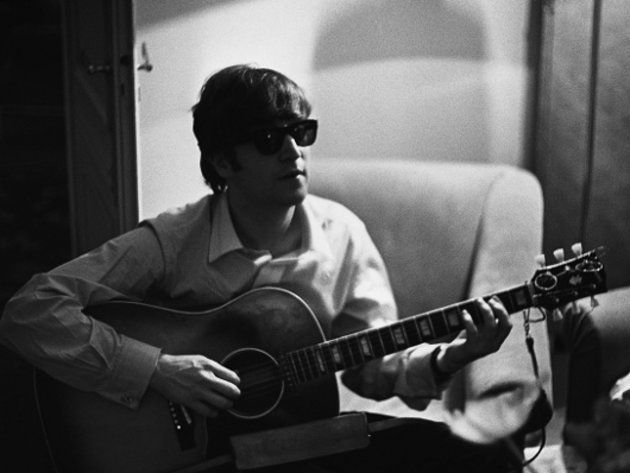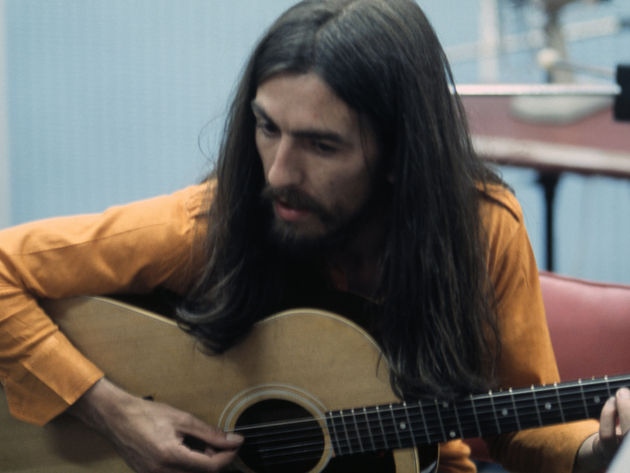How to play acoustic guitar like The Beatles
John Lennon, Paul McCartney and George Harrison's guitar styles explained

A magical mystery tour of guitar styles
While the success of the Beatles undoubtedly lies in their stunning melodies and lyrics, it's easy to forget that behind it all was an engine room featuring three guitarists with unique styles. When these styles combined with the songwriting talents of John, Paul and George, the result was music that was staggeringly well rounded.
Of course, imagine the Fab Four on stage, and you probably picture Paul and his Hofner bass and George and John with either Gretsch or Rickenbacker. However, at various points in the history of the group, each of the three wrote and performed on acoustic guitars. Here, we aim to bring out key facets of each player's style, unique and idiosyncratic touches which meant that the acoustic was a powerful writing tool in each of their hands.
Paul's acoustic playing often featured a 'thumb and strum' technique – he would pick a bass note with the thumb and follow this with a down/upstroke strum with the first finger. In this way, he was able to create strong self-accompaniment patterns that covered both bass and chord duties. This may sound simple if you already have a well-established fingerstyle technique, but it may be tricky to break out of the 'right' habits in order to employ this unorthodox style.
But one of the possible advantages of this way of playing is that the first-finger strum gives a strong percussive quality to your playing which makes for some great rhythmic dynamics (Yesterday, for example). However, Paul was also influenced by Scottish folk guitarist Donovan, who showed all three Beatle pickers some classic fingerstyle approaches.
Paul's elegant, almost baroque playing on Blackbird has been on every aspiring fingerpicker's performance wishlist since it was first heard, and for good reason. The use of wide intervals (tenths) creates a full tapestry of sound which is not muddy, and the combined picking of bass and treble strings makes for a great piece of fingerstyle guitar that could even have stood on its own as an instrumental.
John was more traditional in his approach, employing more of a 'p' 'i' 'm' picking pattern. Again, the influence of Donovan was strong, and in John's playing you will often hear the alternating bass pattern beloved of every fingerstylist – listen to Julia to hear this effect and learn to master it, too. John was also adept at fleet picking-hand patterns, again as evidenced by Julia, so if you are new to this style, start slowly to build up strength and speed.
In addition, listen to his solo performances and you will notice how strong the rhythmic element is – the guitar is there to accompany the voice but it is also the rhythm section and if that falls apart, all is lost. John can also be heard using a 'thumb and strum' approach, although it seems that he would usually pluck a bass string with the thumb and then use a relaxed brush down the string with the picking hand 'ima' fingers.
George is often thought of as being the consummate guitarist within the group, and indeed there is a sophistication and melodic content to his guitar parts – check out the chord progression to While My Guitar Gently Weeps (especially the acoustic version on Anthology). George also used some great devices to make his guitar parts really stand out – not least his use of a capo at the 7th fret on Here Comes The Sun.
This gives his guitar sound a rich, sweet tone which really stands out in the mix and adds another dimension beyond simply playing in the open position. George's playing features jazz- influenced progressions and melody in his rhythms: Here Comes The Sun is again a good example.
We hope you'll enjoy this glimpse into the styles of the three guitar-playing Beatles, and hopefully it will help you when you come to learn their original parts, create arrangements of their pieces or even write your own 'in the style ofs'!
Gear Guide
Each Beatle played a range of acoustics. Paul used an Epiphone Texan and a Martin D-28; early on, John had a Gibson J-160E, for nylon works a Ramirez A1, a Framus for 12-string and later a Martin D-28; George also used J-160E and a Ramirez, and on later albums a Gibson J-200.

Paul McCartney Style Exercise
Download tabDownload audio
Performance notes:
Bar 1
This is a study in intervals of tenths (a third plus an octave) which gave Paul a distinctive, almost baroque sound. The fingerpicking technique allows you to pluck the bass and treble strings together, and Paul would often also employ a down/upstroke strum with the picking-hand first finger.
Bar 5
The same techniques are being employed here, but watch out for some big jumps up and down the fretboard at these points. Try keeping the fretting-hand fingers on the strings so you can move up and down smoothly.
Bar 9
A slower movement here, but work to make sure all the chords are clean and the movement smooth.
Bar 14
The dissonance here acts as a great piece of tension and release, and this type of sound is the hallmark of a songwriter at the top of his game.

John Lennon Style Exercise
Download tabDownload audio
Performance notes:
Bar 1
The 6/8 time signature gives things a different feel, and was a meter that John employed in several songs. Pick the bass notes with the thumb, but this time instead of using the first finger to strum the chords, you can employ a light brush of the ‘i’ ‘m’ and ‘a’ fingers. Just ensure that the strumming hand is relaxed so you’re not too strident when you strike the strings.
Bar 3
The runs between each chord can be sounded with the picking-hand thumb throughout; just make sure that you keep the timing even when moving from strumming several strings to picking one. Bar 7 Here, we find the use of sus2 and sus4 voicings which add another character (these chords do not feature a major or minor third which gives them a ‘suspended’ sound). To see how distinctive this sound can be, listen to George’s opening chord on A Hard Day’s night, a G9sus4.
Bar 13
Watch out for the grace notes here – the challenge is to hardly sound them, and to keep the timing in place.

George Harrison Style Exercise
Download tabDownload audio
Performance notes:
Bar 1
Notice how the use of the capo placed on the seventh fret really sweetens the sound, and how it enables these ideas to take on a freshness and brighter character which you can use to instantly enhance a tune.
Bar 2
A characteristic George device was to play around a particular chord shape in order to maximise its melodic potential – indeed, his guitar parts often feel like they are written by a ‘guitarist’s guitarist’! Bar 8 This type of idea almost serves as a riff, and was a device George would use on a bridge or transition from one part of the song to another – he would also sometimes play parts like this as octaves.
“Beyond its beauty, the cocobolo contributes to the guitar’s overall projection and sustain”: Cort’s stunning new Gold Series acoustic is a love letter to an exotic tone wood
“Your full-scale companion. Anytime. Anywhere… the perfect companion to your full-size Martin”: Meet the Junior Series, the new small-bodied, travel-friendly acoustic range from Martin
“Beyond its beauty, the cocobolo contributes to the guitar’s overall projection and sustain”: Cort’s stunning new Gold Series acoustic is a love letter to an exotic tone wood
“Your full-scale companion. Anytime. Anywhere… the perfect companion to your full-size Martin”: Meet the Junior Series, the new small-bodied, travel-friendly acoustic range from Martin









